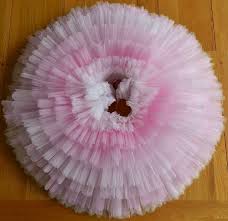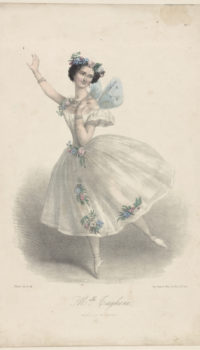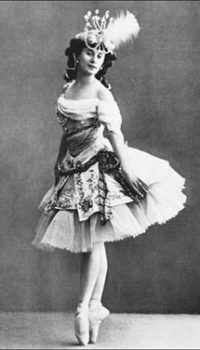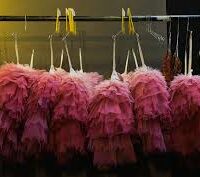
Evolution of the Tutu
The tutu has a long story
the evolution of the tutu made its debut in 1832. It was an instant classic, that has been wrapped in magic ever since.
There was only one ballerina who could make the tutu what it is, Marie Taglioni,
the era’s superstar, and the dancer whose style defined the Romantic ballet movement. In her leading role as an airy woodlands spirit in La Sylphide, Taglioni brought effervescence, lightness and grace to the stage unlike any of her acrobatic predecessors. She seemed weightless—in part thanks to her tutu, the world’s first, designed by Eugène Lami.
Parisian fashion editors went wild for Taglioni, celebrating not only her spiritly dancing, but her innovating costume, which made it look like she flew. The dress was made of layered cotton gauze, with puffed sleeves and a floating transparent belt in blue silk. She wore flowers in her bodice and a crown of wildflowers in her hair. Her simple satin slippers, though popular in the ballroom, were new to the ballet, and are still worn by ballerinas everywhere today. And to complete the look; a pair of transparent wings.

While Taglioni’s costume might seem full of innocence and light now, in her time it was the stuff of seduction. Shapely legs! Transparent skirts! Theophile Gaultier called the tutu an “abuse of white gauze, tulle and tarlatan,” and the tutu took its name from the French slang, cucu, meaning the behind.

While the dreamy appeal of a Romantic tutu is a joy to watch, romance can take a wrong turn.
The first known tutu tragedy occurred in 1862, when 21-year-old Emma Livry, rehearsing for the Paris Opera Ballet, brushed her Romantic tutu skirt against an exposed gaslight, setting it on fire and causing her death eight months later from the burns she’d suffered.
Undeterred, the evolution of the tutu marched on. By 1870 other Italian ballerinas, determined on perfecting pointe work, had begun wearing tutus cut above the knee, allowing them to showcase a bit more of their games and increasingly complicated footwork. Known later as classical tutus and made famous by ballets like Swan Lake, these freer garments climbed farther up, becoming even shorter when ballet entered the 20th century, the added tarlatan layers creating a flared-from-the-body effect.
In the 1940s, wire hoops were inserted to enable the skirt to stand out from the hips.
Tulle, a stiffened silk, nylon, or rayon fabric, soon replaced tarlatan, making the hoop an option, rather than a necessity. Still, there’s a lot more to the tutu than tulle. Its exterior splendour is made possible by an interior that supports the dancer (the bodice allows give, enabling the ballerina to move freely) and at the same time absorbs perspiration, while the voluptuousness of the skirt ingeniously conceals the trunks.
With up to nine supportive layers, each cut progressively wider, and a 10th decorative top layer, the finished classical tutu is often ornamented with sequins, beads, or faux jewels. All done by hand, the costume can easily cost £3,500.00 with less fancy ones available from £1,000.00.

A Romantic tutu, on the other hand, comprises of five layers of tulle, each layer cut to about a 90cm width. Between 23 and 27 meters of fabric are required per garment. And it takes about 60 hours to make a basic tutu. It is truly a labour of love, but if tutus are properly cared for, they can last up to 20 years.

To help them stay stiff when they’re not being worn, classical tutus are hung upside down.
Spray starch can also help a tutu retain its shape, and layers of tulle are often replaced when a skirt loses stiffness. To keep the garments fresh, many are dry-cleaned after every three or four wearing (more ornate ones are dry-cleaned only before being returned to storage), while some are hand-washed after each performance.
Despite the evolution of the tutu throughout centuries, the tutu is an invention that belongs to ballet,
and although it has been copied and has influenced designers and fashion, it is still an invention for the ballet and a remnant of the Romantic age. There are a lot of us who yearn for that kind of romanticism.
Oscar Wilde has said that fashion was “a form of ugliness so intolerable that we have to alter it every six months. But it seems unlikely that the tutu, with its fabled history and beautiful complexities, will go that route any time soon. “It has persisted as a beloved silhouette for more than a hundred years”
Sources; Encyclopedia of the Exquisite, Jessica Kerwin Jenkins.
